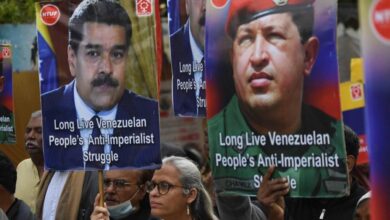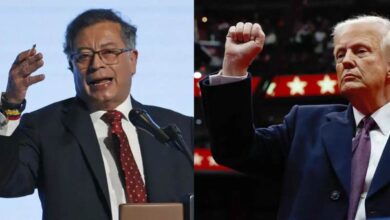Will the fourth IMF disbursement reach Argentina?
Listen this article
In its third revision, the International Monetary Fund (IMF) approves an upcoming disbursement of USD 10,800 million

In order to address some budgetary needs, the Executive Board of the International Monetary Fund (IMF) approved on June 20, 2018, the Stand-By Arrangement (SBA) for three years for Argentina, for a total amount equivalent to USD 50,000 million. This, in a context of significant pressures on the balance of payments of the country, which converged in a significant fiscal deficit, leading the sovereign on several occasions to external financing through the issuance of debt.
Leer en español : ¿En que momento llega el cuarto desembolso del FMI a Argentina?
At the same time, Argentina's economy began to face a significant depreciation of the peso against the US dollar, derived from the rise in rates of US bonds, which led to the targeting of high-risk investors to these instruments, a situation that affected other economies of the region such as Brazil, Chile and Mexico. Together, the inflation rate was raised, and although the Central Bank intervened with measures of rate increases, it was not enough to stop the economic forces.
But what do the figures say?
According to figures from the Central Bank of the Republic of Argentina (BCRA) and the National Institute of Statistics and Censuses (INDEC), at the end of 2018, Argentina's economic situation has not changed substantially after the signing of the Agreement, a scenario that breaks the growth plan foreseen by the IMF and the World Bank, which pointed to 3.0%.
On the one hand, the external accounts showed negative balances, and although they were lower than the previous year, it is not ruled out that by 2019 the external deficit will persist. This, in harmony with the perspectives of the IMF who, when observing the official figures, assured that the recession would persist this year, and in addition, it would be located in 1.7%.
Also, since the beginning of 2018 there has been significant exchange rate volatility, which they say will persist until the end of 2019, but at a slower pace. According to experts, this behavior is the result of the high level of indebtedness, uncertainty about government management and flight of capital into the US market, which together generated a significant increase in the dollar, placing the exchange rate above 40.0 pesos/dollar. This led the BCRA to intervene by raising the interest rate above 50%.
At the same time, devaluation levels affected consumer prices, mainly food and medicine, reflected in the cumulative inflation of 2018, which reached 39.7%.
That is, the BCRA measure could not contain the market imbalances, on the contrary, they negatively affected the peso market, they compromised the industrial activity after the recession reached at the end of the year, and neither inflation nor the exchange rate stopped.
All in all, the IMF disburses USD 7.6 billion
Despite the above, On December 19, 2018, the Executive Board of the International Monetary Fund (IMF) completed the second review of the SBA, on which it concluded that the program of reforms proposed by the country, together with the new monetary policy framework, had yielded results. This, by virtue of the stability seen in the peso during those months that remained between 36-38, and the decrease in inflation that went from 1.9% in September to 1.4% in October, which was a true part of what is required. This allowed turning USD 7,600 million, to total USD 28,090 million at the end of 2018, close to 50% of the total approved.
In this regard, the authorities continued the program, assisted also by the approval of the 2019 budget, which encouraged confidence in the reform plan. However, they acknowledged that there is a lack of strengthening of economic activity, which they estimate will recover by mid-2019 to continue with the established guidelines.
With positive but premature results, the IMF disbursements continue
After the third disbursement, on April 5, 2019, the Executive Board of the IMF carried out the third review of the economic evolution of Argentina under the SBA. The observed results allowed the multilateral agency to make the fourth disbursement for SDR 7,800 million (USD 10,800 million), which together with the previous ones have reached a total of SDR 28,013.71 million (USD 38,900 million), which represents approximately 70% of the total amount approved , and close to 45% of the amount expected to be disbursed by 2019 (USD 22,000 million), which until August 2019 will be used to pay interest on the current public debt.
In this context, the reviews carried out by the authorities have allowed him to point out that the SBA is working. This, due to the negative variations that were observed in the external accounts, compared to the same period of the previous year, which as seen from the current account of the balance of payments, registered a fall of 9.5% and 75.3% to the closing of the third and fourth quarters, respectively. With this, the year 2018 closed down negatively with a variation of 11.4%, according to INDEC figures, which translates into a decrease in the primary deficit below that set in the Agreement (2.7% of GDP in 2018).
Read also: Panic in the Argentine economy: this is the 'Macrisis' effect
However, the indicators of economic activity, inflation, and the exchange rate did not receive the same impressions. The economy contracted at the end of the year, to which the IMF said that "there are signs that the recession has bottomed, and a gradual recovery is expected in the coming quarters." For its part, inflation continues to be high and the exchange rate, although it had shown some stability, increased at the beginning of the year to reach a positive variation of 7.7% in March 2019 compared to the previous month, when it closed at 41, 4 pesos/dollar. On this, the BCRA decided to extend until the end of 2019 its monetary policy of freezing the quantum of pesos in circulation, a measure that began on October 1, 2018.
In this way, and to continue counting on the support of the Agency, Argentina expects to receive in the remainder of the year USD 11,700 million, USD 3,800 million in 2020 and USD 1,900 million in 2021.
LatinAmerican Post | Rosangela Morillo
Translated from "¿En qué momento llega el cuarto desembolso del FMI a Argentina?"





